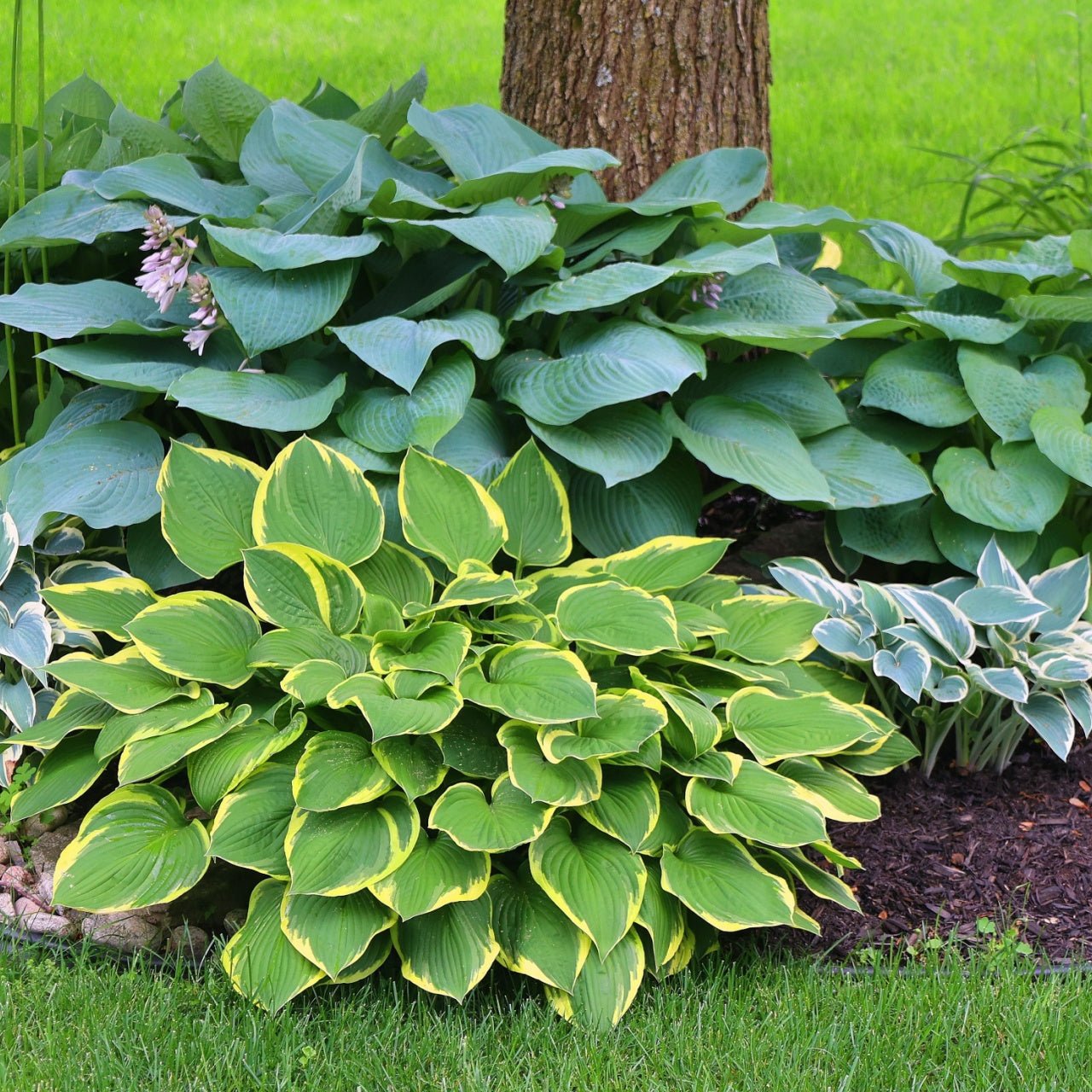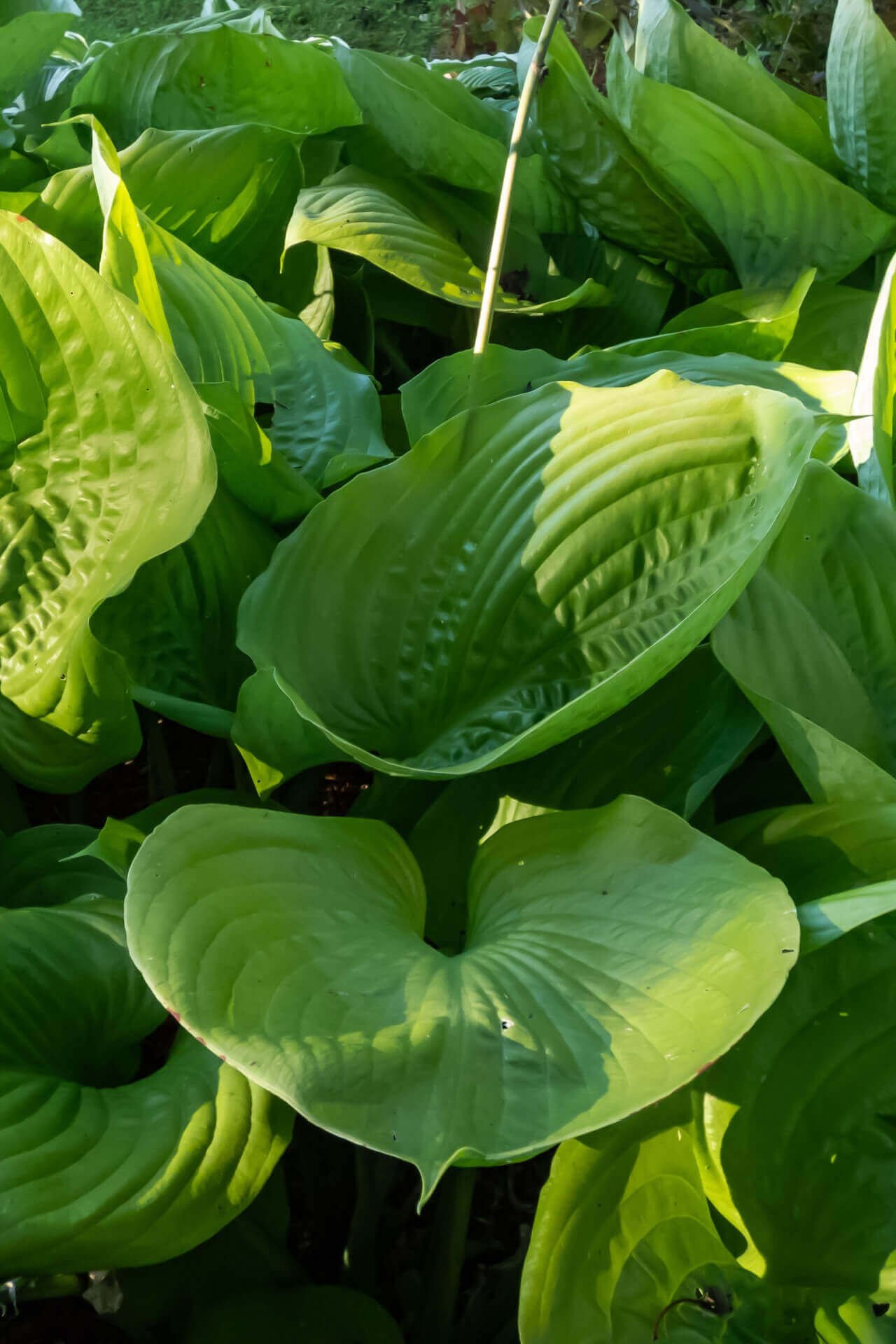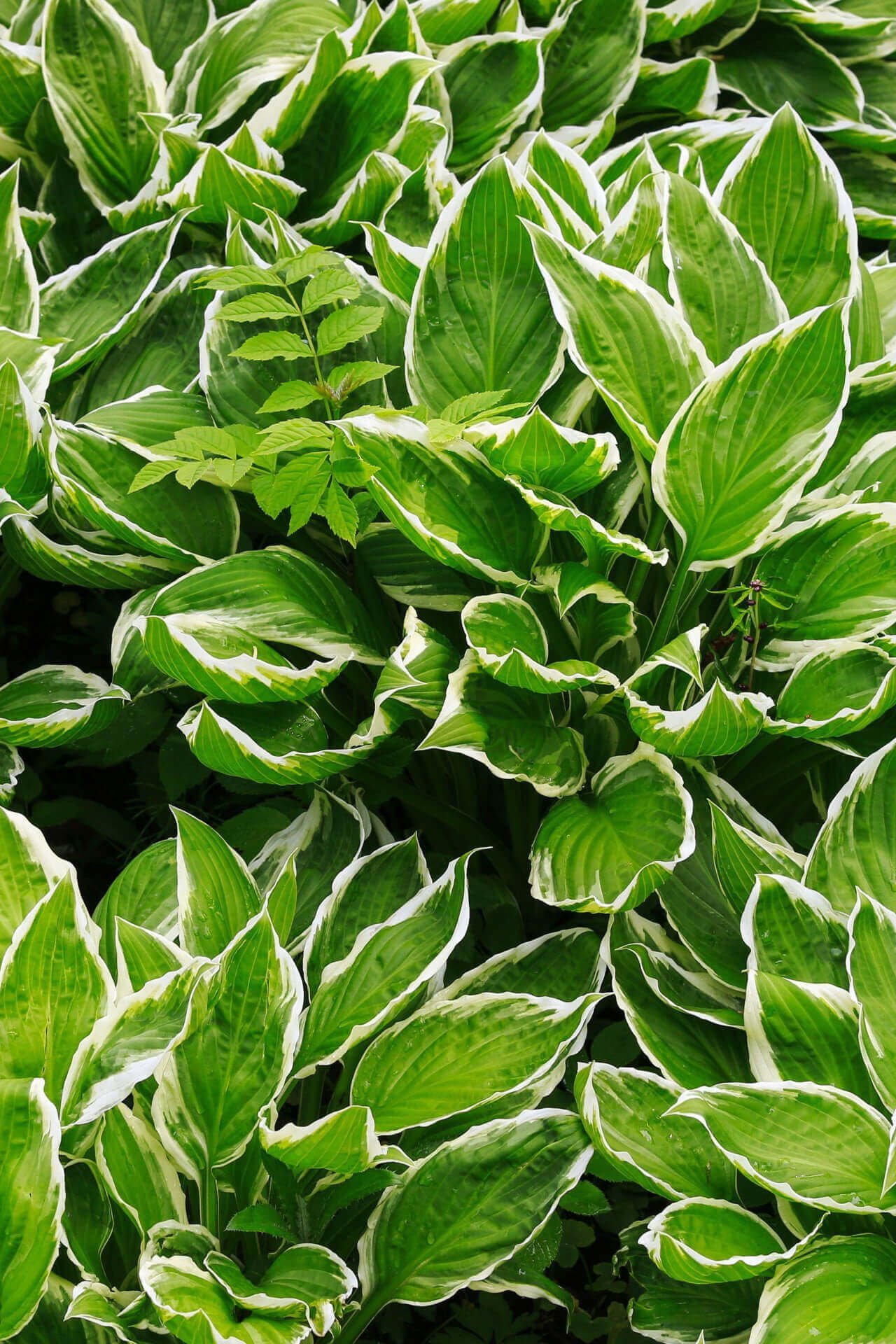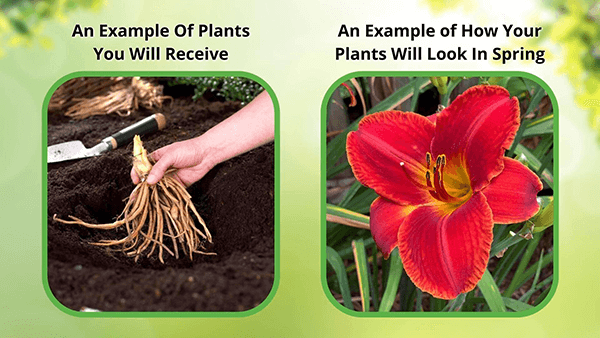




Hosta
This plant ships:
NowWe sell bare root plants - click here to see what you'll receive
Hosta - Plantain Lilies
Hostas are shade-loving perennials known for their large, heart-shaped, and often variegated leaves and spikes of bell-shaped flowers, making them popular choices for garden borders and landscaping in low-light areas. They are renowned for their lush foliage and graceful appearance, which offer many benefits when incorporated into landscaping designs. These versatile perennials have gained popularity for their ability to enhance outdoor spaces with their aesthetic appeal, adaptability, and ease of maintenance.
It is an attractive herbaceous plant that can grow up to 4 feet in height, although a height of 18 inches is more common. There are several species of them, each with slight differences in leaf color. Each species has a different bloom, making exceptional focal points in any garden.
Hosta Has Stunning Leaves
The type seen most commonly in the United States is the "Keepsake." The charming green leaves ringed with yellow accents are popular because of their hardiness in different climates and the beautiful vistas they create in a garden. Sometimes, the lighter color rings are shades of white rather than yellow, but they don't lose any eye-catching effects. They have leaves of a single color, usually dark green. All their leaves are sturdy and ribbed, even if they're longer and tapered rather than cheerfully oval.
Compliment Your Landscape With Hostas
Most versions have pretty purple or white flowers that bloom in the early summer through the beginning of fall. The flower buds form in the middle of spring and are generally the same color as the flowers. Even when they're just budding, they are beautiful plants that complement everything else in the garden. Once the buds bloom, the flowers form trumpet, bell, or elongated pendulous shapes. Only one version of these flowers has a strong scent, called the "August Lily." It's a shy flower, blooming in the evening and closing up again by morning, so it'll brighten up any garden when the sun goes down.
It Does Great With Other Plants
When they are surrounded by flowers of similar colors, such as California bluebells for the species with violet flowers or tuberose for the white-flowered species, it creates a breathtaking effect. Alternating the various species in concentric rings would increase their appeal and let them truly shine.
The blooms, such as bees, butterflies, and hummingbirds, are essential for pollinators. The flowers provide nectar, and the leaves collect dew in the mornings, allowing these little creatures to drink while visiting the garden.
These plants grow in partial shade or full shade, hence suitable for gardens that may offer limited sunlight. They grow well in well-draining and nutrient-filled soils and should be watered consistently, especially during dry periods.
They are perennials and go dormant in winter. Prune dead foliage in the fall and then put a layer of mulch to protect the roots from freezing.
They come in all sorts of sizes, from small miniatures to large sprawling plants. Their foliage comprises beautiful green, blue and gold that may have different patterns.
Snails or slugs are common enemies for the plants. You can use eggshells or diatomaceous earth around the base. You can also reduce pest problems by maintaining a clean environment and ensuring good air circulation in the garden.
Hostas are perfect for container gardening and, therefore, can be placed on the patio or in other small spaces. It is advisable to plant the flower in a pot with a good drainage hole; water it frequently and place it in a shaded area.
| Planting zone | [3, 4, 5, 6, 7, 8] |
|---|---|
| Bloom season | Spring |
| Bloom color | Purple |
| Height At Maturity | Under 12" |







Hosta
This plant ships:
Now| Planting zone | [3, 4, 5, 6, 7, 8] |
|---|---|
| Bloom season | Spring |
| Bloom color | Purple |
| Height At Maturity | Under 12" |

